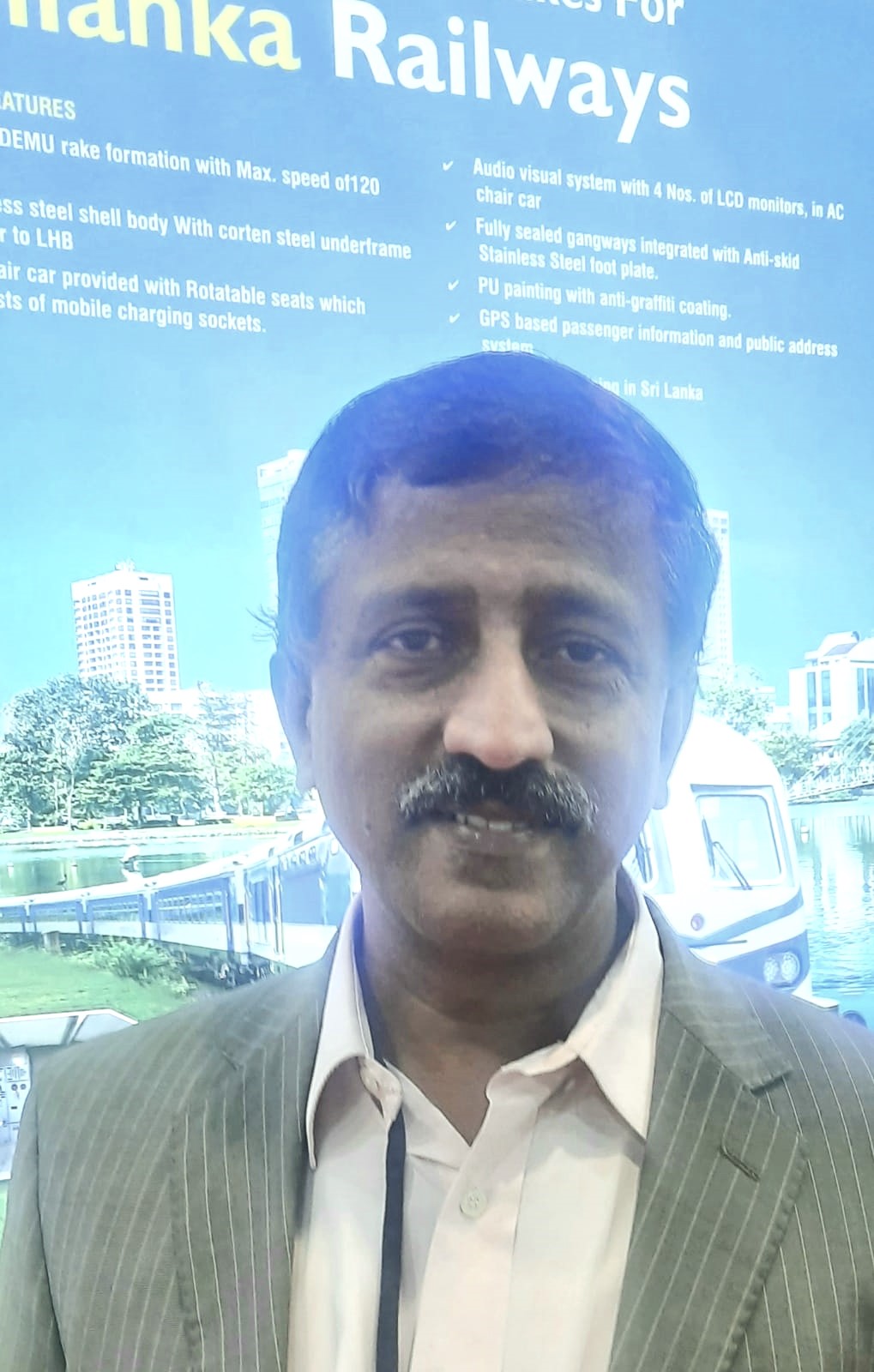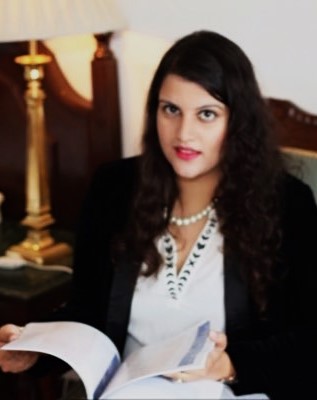Advocate Surya Pratap Singh Rajawat passionately promotes Constitutional Morality throughout India by showcasing illustrations from the original Constitution of India in exhibitions. Since 2018, he has conducted exhibitions and delivered talks in over 40 educational institutions. His involvement spans significant roles including the India Yoga Association Rajasthan Chapter, Board of Studies at the Centre for Road Safety (Sardar Patel University of Police, Security and Criminal Justice), Advertising Standards Council of India, and Sri Aurobindo Society Rajasthan.
Currently serving as Assistant Government Counsel at Rajasthan High Court, Jaipur, Rajawat is also a nominated member of Digital Museum Rajasthan Vidhan Sabha and President of the IIS Alumni Council. He authored ‘Sri Aurobindo and The Constitution of India,’ launched by Union Home Minister Amit Shah in Puducherry in 2022, and ‘Bharat Bodh aur Samvaidhanik Naitikta’ in Hindi on Kindle Version in 2023. The latter book is being considered for inclusion in UGC’s recommended readings for E-KUMBH.
In a candid interview with senior journalist P. Srinivasan of The Interview World, Rajawat reveals his inspiration behind spreading awareness about the Indian Constitution to a broader audience. Here are the key insights from his interview.
Q: What inspired you to champion the propagation of the Constitution of India?
A: Upon my visit to the Parliament Library in 2017, at the recommendation of Additional Advocate General Gurcharan Singh Ji, I encountered the original Constitution of India, handwritten by Prem Bihari Narayan Raizada in English and Vasant Krishna Vaidya in Hindi. The experience was profoundly moving.
The artwork adorning each part of the Constitution, depicting the evolution of Indian civilization, particularly struck a chord within me. Beginning with Mohenjo-daro and progressing through the Vedic Age with its emphasis on Gurukul, these illustrations are deeply symbolic. Notably, the depiction in the chapter on fundamental rights of Lord Ram, Sita, and Lakshman returning to Ayodhya on the Pushpak Vimana, and the scene from the Mahabharata’s Kurukshetra where Lord Krishna imparts the teachings of the Gita to Arjuna, further underscored the cultural tapestry woven into our Constitution.
These vivid representations, juxtaposed against the common perception of secularism in India, provoke contemplation. They highlight a contradiction: could such illustrations find a place in today’s Constitution? Regrettably, the answer appears to be no.
Reflecting on my education at ILS Law College, I realized that these profound aspects were never part of the curriculum.
Q: Are there any depictions or references to Islam in the illustrations?
A: Before the chapter begins, several illustrations depict figures such as Lord Mahaveer, Gautam Buddha, and King Ashoka. Notably absent is any mention of Islam; however, the text does highlight Akbar’s contributions during the Medieval period.
Q: Why were these illustrations chosen for each chapter?
A: At that time, leaders aimed to resolve confusion among future generations regarding India’s inception, whether on August 15, 1947, or January 26, 1950. They approached Acharya Nandlal Bose at Shanti Niketan with a proposal: to design our Constitution not only as a decorative document but one that embodies our history, culture, civilization, and heritage. This approach would enable future generations to connect deeply with our roots.
Hence, the first illustration prominently features the seal of Mohenjo-daro, representing a significant era in history. Other illustrations include scenes from Nalanda University and the tapasya of Bhagirath to bring the river Ganga down to earth. These depictions immerse the viewer in our historical narrative, serving as landmarks of the respective eras, or what can be termed as their ‘Yug Dharma’.
Moreover, the medieval period is richly illustrated with contributions from Akbar in architecture, alongside depictions of Chattrapati Shivaji and Guru Govind Singhji. These carefully selected illustrations provide insights into the psyche of India, offering a comprehensive understanding of our cultural evolution.
Q: Do you have any additional thoughts?
A: Indeed, the Constituent Assembly debates reveal a fascinating insight: India historically welcomed traders, invaders, and foreigners to the extent that they embraced Indian culture. This sentiment echoes in the Supreme Court’s judgment on Ram Janmabhoomi, suggesting a connection between the two. It’s plausible that the judgment’s author drew from these debates.
The debates highlight Akbar’s assimilation of Indian culture, contrasting sharply with his successors who failed to uphold this legacy. Shivaji and Guru Govind Singhji emerge as figures symbolizing Indian resistance against such lapses. Today, it’s crucial for every citizen, especially the youth, to grasp these constitutional nuances.
Presently, political discourse often revolves around Gandhi and Netaji Subhash Chandra Bose. Our Constitution honors both, depicting Bose as a liberator of Mother India from external forces. Emotionally, freedom fighters, through art and symbolism, revered the nation as Mother India.
While the inclusion of a picture depicting the Noakhali riots might raise questions, it prompts a deeper understanding of history’s complexities. As students of history and responsible citizens, it’s imperative to comprehend our past accurately.
These 22 illustrations should serve as foundational principles for our National Education Policy (NEP). They can be augmented or refined, but these core principles must remain untouched.
Q: What actions did you take after being impressed by the Constitution?
A: Since 2018, I have been dedicated to ensuring that these illustrations grace every household through organized exhibitions. In 2021, I was honored when Governor Kalraj Mishra of Rajasthan acknowledged and supported my initiative. This concept evolved into a coffee table book, backed by the Sri Aurobindo Society, Pondicherry, and unveiled by Union Home Minister Amit Shah. I have personally engaged with youth across more than 40 institutions spanning Rajasthan, Gujarat, Uttar Pradesh, Madhya Pradesh, and Delhi. Notably, the Rajasthan High Court in Jodhpur has permanently showcased these illustrations in the central dome of its new building, marking a pioneering step in India.
Q: Which state was the first to establish the Constitution Park?
A: Constitution Park stands as a monumental achievement spearheaded by Governor Kalraj Mishraji. I am deeply thankful for his invitation to the inauguration on January 3, 2023. This innovative initiative offers educational value and is accessible to everyone, with open days on Friday and Saturday, complemented by an efficient online booking system. Remarkably, Rajasthan leads as the sole state to boast such a park dedicated to the constitution.
Q: Could you clarify the accuracy of the statement that Dr. B.R. Ambedkar wrote the Constitution? Additionally, is it true that the last 10 pages of the constitution contain signatures of members of the Constituent Assembly?
A: Upon reviewing the debates of the Constituent Assembly, each article underwent extensive deliberation, with numerous amendments proposed and reasoned arguments presented. Ultimately, the decision rested with Dr. Ambedkar, who provided his insights for or against the amendments before each article was put to a vote. His pivotal role in the drafting process extended beyond mere chairmanship of the drafting committee. Approximately 20 committees were tasked with addressing various subjects, and their respective chairpersons submitted reports to the Constituent Assembly. Dr. Ambedkar synthesized these inputs to formulate the draft constitution—a formidable undertaking demanding meticulous attention to language, punctuation, and grammar. Hence, he is rightfully regarded as the principal architect of the Constitution.
Q: How has the response been to the exhibitions you have held so far?
A: It has been a remarkable experience. The environment underwent a significant transformation following the organization of the exhibition. The teaching faculty was deeply moved; they questioned, ‘If this is enshrined in our constitution, why haven’t we been teaching it?
Q: How many people have read the Constitution?
A: Most people have not read the Constitution. When I began to promote awareness about the Constitution of India, many accused me of fabricating its contents. Even judiciary officials and bureaucrats were unaware of these illustrations. I faced allegations of promoting Hinduism, which troubled me, despite my sincerity. I am merely disseminating information.
Initially, people mistook these illustrations as my additions, believing they were not part of the original Constitution. Unfortunately, books featuring these illustrations were not commercially available. Following my request, the Government of India made them accessible through Khadi India at Connaught Place, New Delhi.
Q: What’s the response of youth?
A: After visiting the exhibition, the youth raise numerous questions. They wonder why the items are not available in the market and why they should not be. They are puzzled by the inclusion of Lord Ram’s picture, questioning how any responsible government could ever have claimed that Ram was a fictional character. These questions provoke deep reflection and offer a genuine portrayal of our country. The exhibition does not present a narrative but revives something that has faded from public memory, and I aim to restore it.
I address the youth’s questions and can satisfy their curiosity. Occasionally, there are extreme queries about constitutional amendments. In response, I advise them to first understand India before they can truly appreciate it. I urge educational institutions to teach students about these matters. To me, knowledge of these 22 illustrations is crucial for understanding India. While students may know more than this, lacking this knowledge leaves a gap. These specific illustrations demonstrate the theme of continuity with change. The philosophy from the Vedic age persists even today, embodied in what we call Sanatan Dharma. Continuity evolves into new forms, but the spirit remains unchanged.








